Lee DE Forest.org

Lee de Forest invented the three-element vacuum tube which became the basis of all electronic devices. He called it the Audion.
In the Nineteenth Century Thomas Edison noticed a blackening on the inside of his burning light bulb. He believed it to be caused by electrons and he named it the “Edison Effect.” Years later Ambrose Fleming who had worked for Edison and Marconi filed a patent for a tube or “valve” and used it as a rectifier to convert wireless code to a voltage that triggered a galvanometer to indicate messages visually. De Forest developed his own version of this tube, called it the Audion and used it to detect or receive code and voice messages: “The patentable differences between this invention and that of Fleming are de Forest’s addition of the second battery between the plate and the earphone, called a “B” battery, and the use of a telephone earphone instead of the galvanometer. These two very significant changes result in the “hearing” of a signal as opposed to Fleming’s “seeing” it using a visual indicator. These differences mean that only the de Forest version will be able to “hear” the audio from the imminent invention of the radiotelephone.” From the book, "Lee de Forest, King of Radio, Television, and Film."
The Audion


Lee de Forest, 1873-1961, was an inventor and scholar who made significant contributions to the science of electronic communications during the first three decades of the Twentieth Century. He held numerous patents on the technology of radio, television and film.
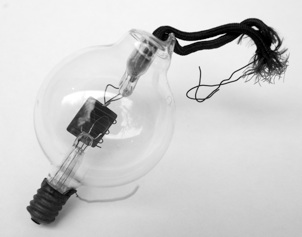
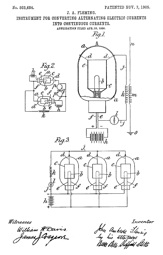
Above, the original Fleming patent for the diode or 2-element vacuum tube. Below, the first de Forest diode patent and a tube showing a close-up of the three elements of a triode.
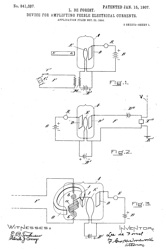
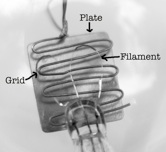
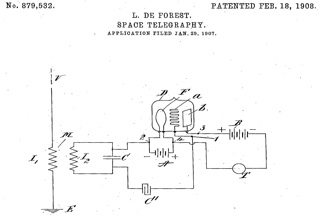
The first patent for the 3-element Audion. it was filed in January 1907

Order now from Amazon.com, "Lee de Forest, King of Radio, Television, and Film" by Mike Adams

Have a question about Lee de Forest? Email the creator of this site, Mike Adams | Contact Jim Reed at History San Jose about the de Forest papers

